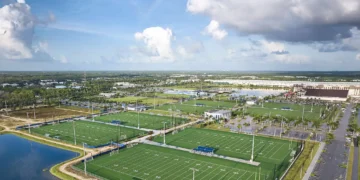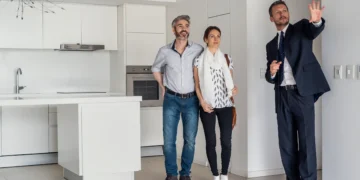After 10 years, Blue Zones Project SWFL presented its final report on community well-being and other health metrics at an event held Aug. 14 at NCH Business Center, attended by representatives of more than 20 partner organizations.
Blue Zones Project SWFL and sole financial sponsor NCH announced last month that their partnership in the program that’s focused on improving community health and well-being will conclude when the current contract expires Aug. 31.
In announcing the program’s conclusion, Blue Zones Project SWFL, which has been part of the international Blue Zones project active in more than 70 communities around the world, and NCH said the program “has exceeded its goals for transformative change and well-being improvement across the region” and that NCH and its local partners “are committed to sustaining and expanding upon these achievements.”
 Community impact 10 years later
Community impact 10 years later
Megan Greer, executive director of Blue Zones Project SWFL, called the project a “huge community effort” when introducing her final report and summary of key findings.
According to data from Blue Zones, more than 275,000 individuals and 835 organizations, including businesses of all sizes, nonprofits, municipal policymakers and planners, Lee/Collier government, school districts, Departments of Health, restaurants, grocery stores, churches, schools and homeowners’ associations, have participated in Blue Zones Project initiatives and activities to help make healthier choices easier.
In her presentation, Greer cited key findings through April 2024 on areas including overall well-being, high blood pressure, physical activity and community policies:
- SWFL overall well-being is 71.4, an increase from 2015 (68.6); Greer said this represents a stronger position than both the state of Florida and national scores;
- Reported high blood pressure has decreased 16.6% and is lower than both the state and national rates;
- Physical activity increased 5.6 points since 2015, with 67.3% of the community reporting exercising more than 30 minutes more than three days a week, representing a 9.1% increase since 2015;
- More than 60 new community policies and plans implemented to improve built-environment infrastructure, food systems and lower tobacco use across Southwest Florida to support better health among residents.
 Project partners sustaining the momentum
Project partners sustaining the momentum
Among BZP partners represented at the event were NCH, Baker Senior Center of Naples, Collaboratory, Collier County Department of Health, United Way of Collier County and the Keys, Hazelden Betty Ford, David Lawrence Centers for Behavioral Health, Healthcare Network, American Heart Association, Cultivate Abundance, Our Daily Bread Food Pantry, the Greater Naples Chamber and Naples Botanical Garden.
Partner representatives broke into “workshop” groups following the final report to discuss ways to sustain key program areas after the official BZP platform concludes.
BZP SWFL Marketing Director Summer Manning said the small groups offered the opportunity for community partners to set some priorities for project areas to be sustained.
“As for potential next steps from the breakout groups, we saw some themes weaving throughout which will continue to be top priorities for the community,” Manning said. “We have many partners and community groups that are collaborating on this work, and we believe it will continue to propel forward.”
Manning said breakout topics included continuity of care, affordable housing, accessible transportation, childhood obesity, physical activity/exercise and mental health.
BZP and NCH provided a Transition Sustainability Plan for partners and community members to review and use for future planning, which will be available at southwestflorida.bluezonesproject.com for an additional 30 days after Aug. 31, according to Manning.
Blue Zones programs are based on National Geographic research that found nine commonalities among people around the world who live the longest and the healthiest. Those longevity hotspots are known as “Blue Zones” and the principles they follow are known as the Power 9: move (exercise) naturally; find a purpose; “down shift” from stress; stop eating when 80% full; eat a more plant-based diet; find a daily connection with friends; build social circles that foster healthy behaviors; belong to a civic or faith-based community; and put family first.
In an interview following the event, executive director Greer called the BZP partners “warriors and champions for the community” and said she believes they will continue much of the work started under the BZP platform.
“The feedback from these groups is really important and we will have something to follow through with into action items,” she said. “The Department of Health CHIP (Community Health Improvement Planning) report has a very distinct set of action plans, so this will help inform additional opportunities for people to get involved and to support. Between all these groups and partners, it keeps the conversation going. Something might happen where we have a new need, or we need to address something additional in this realm of social determinants of health. That gives the opportunity to ask: What are we missing? Who needs to be at the table? And are there new indicators or new factors that we need to address?”
Greer said she sees this group of partners as a “family” that will continue to look for ways to make sure things don’t “fall through the cracks.”
“For me, this group is like a family: they look out for each other,” she said. “This group of people wakes up every day trying to solve these problems.”
This story was published in The Naples Press on Aug. 23.





